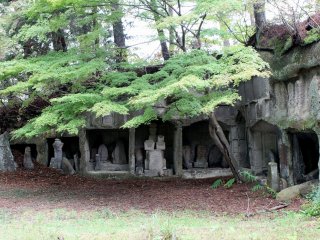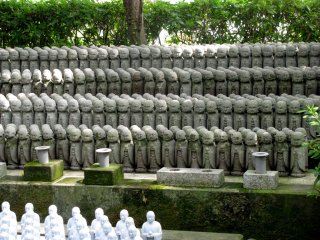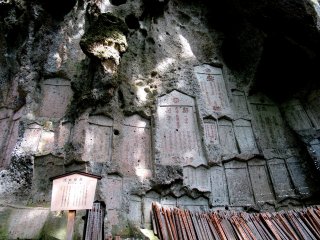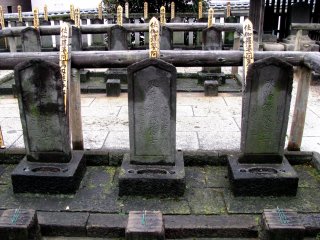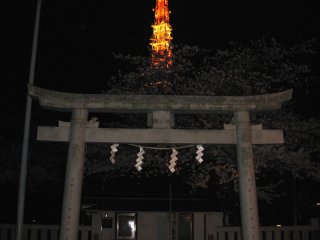I must admit that I’m a rather brave person and have no fears and prejudices; however in my trips I found really strange and mysterious things and places that made me feel uneasy.
On my very first trip I visited Hase-dera temple in Kamakura and saw endless rows of identical statues – images of Jizo in the memory of little children who have passed away. That significance and great number of them made me feel sad, and at the same time out of place. It is hoped that Jizo takes care of all those children’s’ souls.
Later, I found some ancient cemeteries and gravestones in rocks at Matsushima. Especially spooky was a place with gravestones located in a pit surrounded by trees on Oshima Island. The mystery was heightened by a coming storm and the fact that I was there all alone.
One more graveyard that made me feel quite strange was at Sengakuji Temple with the graves of legendary 47 ronin. The thought that they committed seppuku in that very place drew a picture in my mind. It is a true story, not a folk legend.

Mysterious were gardens on gloomy rainy days. I walked alone where usually there are a lot of people and it seemed that all the people had disappeared for some reason. Contrasting colors added to the ‘unreality’ of the views. The same feeling I again experienced walking in Odaiba when unknown to me a typhoon was coming. I walked on empty streets and took a ride on a Ferris wheel absolutely alone watching a ‘ghostly city’ below.

In darkness, Shinto shrines sparsely lighted look quite mysterious and one of the most ‘unreal’ for me was Fushimi Inari Taisha with its jumble of gravestones, torii and statues of kitsune, some with scary faces. The higher I climbed the fewer people I met and finally there was nobody around – that was really strange!

For a few years I was involved in the Artist Dolls’ Exhibitions in Tokyo and got acquainted with the works of Japanese doll artists called ningyoka (ningyo means doll). Though made absolutely perfectly, most of the dolls seemed decadent to my eyes, but I was told they appealed to the Japanese taste. I can’t say I didn’t like those dolls, but I consider them ‘mysterious’.

































